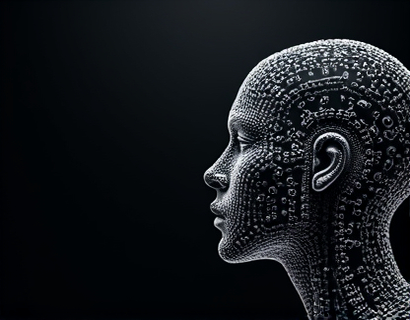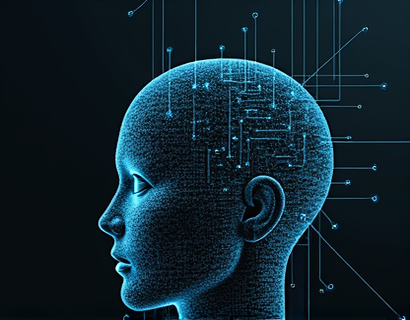Transforming Healthcare Access with AI-Powered Chat Interfaces
The healthcare industry is undergoing a significant transformation with the integration of artificial intelligence (AI) technologies. One of the most promising developments is the AI-powered chat interface, designed to enhance access to specialized clinic information and industry insights for a diverse audience. This innovative tool is revolutionizing the way healthcare consumers, families, students, and professionals interact with medical information, ensuring that accurate and reliable content is available to all.
Enhancing Access to Specialized Clinic Information
The primary function of an AI-powered chat interface in healthcare is to provide users with detailed and accurate information about clinic services. Patients and their families can easily access details about various medical specialties, treatment options, and the expertise of healthcare professionals. This level of transparency empowers individuals to make informed decisions about their health care, fostering a more proactive and engaged patient population.
For instance, a user seeking information about cardiology services can ask the chat interface about specific procedures, common conditions treated, and the qualifications of the cardiologists. The AI system, backed by a comprehensive database of verified medical information, delivers precise and up-to-date responses. This not only saves time but also reduces the likelihood of misinformation, which is crucial in healthcare decision-making.
Industry Insights for a Broader Audience
Beyond clinic-specific information, AI-powered chat interfaces offer valuable industry insights. Users can gain knowledge about the latest medical research, emerging treatments, and healthcare policy changes. This feature is particularly beneficial for healthcare professionals who need to stay current with the latest developments in their field. For students and educators, these insights serve as a rich resource for academic and teaching purposes.
The chat interface can also provide data on healthcare trends, such as the rise of telemedicine, advancements in medical technology, and shifts in patient preferences. By offering these insights, the AI system helps users understand the broader context of healthcare, promoting a more informed and educated community.
Content Verification for Trust and Safety
A critical aspect of any healthcare information platform is the verification of content. Misinformation in healthcare can have severe consequences, making it essential to ensure that all information provided by the AI chat interface is accurate and reliable. To achieve this, the platform employs a rigorous content verification process involving medical experts and peer-reviewed sources.
Each piece of information is cross-referenced with reputable medical databases and journals to guarantee its accuracy. This commitment to content integrity builds trust among users, who can confidently rely on the chat interface for their healthcare needs. Additionally, the platform regularly updates its database to reflect the latest medical findings and guidelines, ensuring that users always have access to the most current information.
Catering to a Diverse Audience
The AI-powered chat interface is designed to serve a wide range of users, each with unique information needs. For healthcare consumers, the focus is on providing personalized health advice, treatment options, and preventive care information. Families benefit from resources that cover a broad spectrum of health topics, from child development to chronic disease management.
Students and educators find the platform invaluable for educational purposes. Students can explore various medical specialties, understand the healthcare system, and learn about career opportunities in the field. Educators can use the platform to create lesson plans and provide students with accurate, up-to-date information for projects and research papers.
Healthcare professionals, including doctors, nurses, and medical students, can use the chat interface to stay informed about the latest clinical guidelines, research findings, and best practices. The platform also offers a forum for professionals to ask questions and engage in discussions, fostering a community of continuous learning and improvement.
Child-Friendly Version for Educational and Safe Interactions
Recognizing the importance of accessible and safe healthcare information for children, the platform includes a dedicated child-friendly version. This version is designed to be engaging and educational, using age-appropriate language and interactive elements to capture the interest of young users.
The child-friendly chat interface covers a range of topics tailored to different age groups, from basic health and hygiene for younger children to more complex subjects like adolescent health and wellness for older kids. Parents and guardians can also use this version to guide their children in understanding their health needs and making informed decisions.
Safety is a top priority, with strict content filters and monitoring systems in place to ensure that all interactions are appropriate and free from harmful or misleading information. The child-friendly version includes features such as parental controls, allowing adults to manage their children's access and interactions on the platform.
Personalized Healthcare Guidance
One of the most significant advantages of an AI-powered chat interface is its ability to provide personalized healthcare guidance. Users can input their specific health concerns, symptoms, or questions, and the AI system generates tailored responses based on their input. This personalized approach ensures that the information provided is relevant and applicable to the user's unique situation.
For example, a user with diabetes can ask about managing blood sugar levels, and the chat interface will offer personalized advice based on the latest medical research and best practices. Similarly, a patient recovering from surgery can receive step-by-step guidance on post-operative care, including when to resume normal activities and what signs to watch for that may indicate complications.
Enhancing Patient-Provider Communication
The AI chat interface also serves as a tool to enhance communication between patients and healthcare providers. Patients can use the chat to prepare questions for their next appointment, ensuring they make the most of their time with the provider. Providers can use the platform to send follow-up instructions, reminders, and educational materials to patients, improving adherence to treatment plans and overall health outcomes.
Moreover, the chat interface can facilitate early intervention by identifying potential health issues through user inputs. If a user reports symptoms that warrant attention, the AI system can suggest appropriate actions, such as scheduling a consultation or seeking emergency care, thereby promoting timely and effective healthcare delivery.
Promoting Health Literacy and Empowerment
By providing accessible and accurate healthcare information, the AI-powered chat interface plays a crucial role in promoting health literacy. Health literacy is the ability to obtain, read, understand, and use healthcare information to make informed health decisions. A well-informed patient population is better equipped to manage their health, reduce healthcare costs, and improve overall well-being.
The chat interface demystifies complex medical concepts by explaining them in simple terms, making healthcare more approachable and understandable. This empowerment is particularly important for underserved communities, where access to healthcare information and resources may be limited. By bridging this gap, the platform helps to create a more equitable healthcare system.
Technological Advancements and Future Prospects
The development of AI-powered chat interfaces in healthcare is part of a broader trend towards digital transformation in the industry. As technology continues to advance, these platforms will become even more sophisticated, incorporating natural language processing, machine learning, and data analytics to provide even more accurate and personalized interactions.
Future enhancements may include integration with wearable devices and electronic health records, allowing the chat interface to access real-time health data and offer more contextually relevant information. Additionally, the use of virtual reality and augmented reality could create immersive educational experiences, further enhancing the platform's value to users.
Conclusion
The AI-powered chat interface represents a significant leap forward in healthcare accessibility and education. By providing specialized clinic information, industry insights, and personalized guidance, this technology is transforming the way users interact with healthcare. With a strong focus on content verification and safety, particularly through a child-friendly version, the platform ensures that all users can trust and benefit from the information provided.
As the healthcare landscape continues to evolve, AI-powered chat interfaces will play an increasingly vital role in empowering patients, enhancing provider-patient communication, and promoting health literacy. Embracing this technology is not just about staying current; it's about building a healthier, more informed future for all.










































